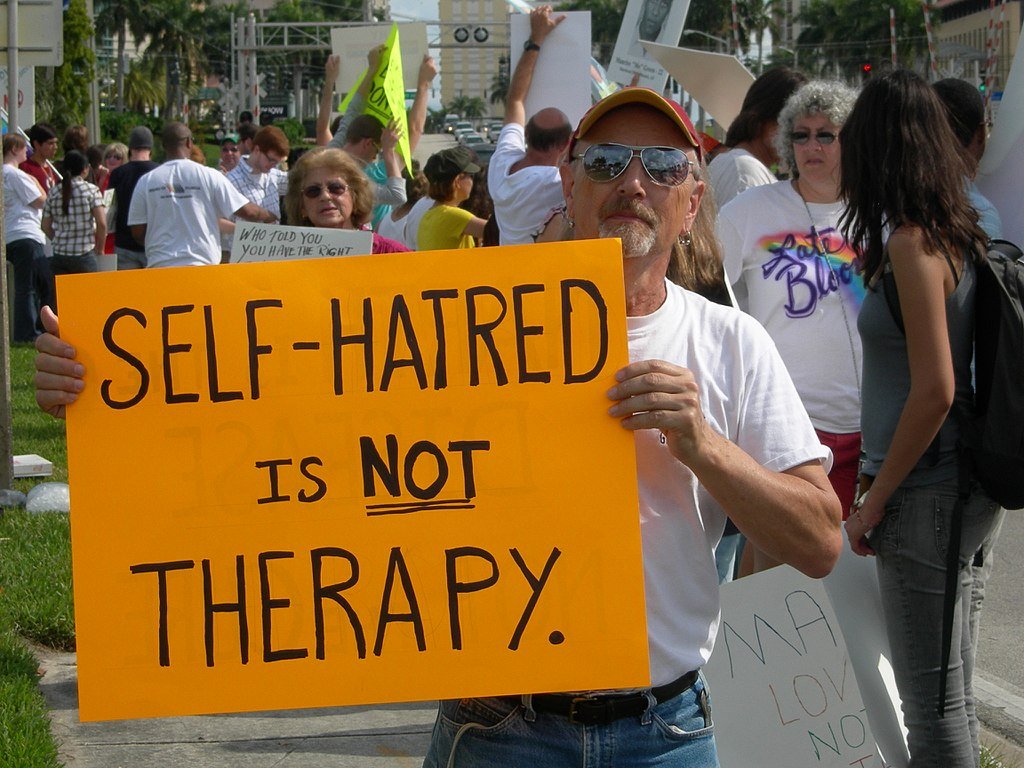In an iconic scene from the second X-Men film, Iceman’s mother pointedly asks him, “Have you tried not being a mutant?”
It’s a recurring theme in the X-Men series of films and comics, where mutation is a metaphor for difference generally, and often for queer sexuality specifically. Mutants are often overwhelmed by their difference and social isolation and seek out a “cure.” More often than not, the mutants later spurn the supposed cure and learn instead to celebrate their uniqueness.
The villains peddling cures in these stories are supposed to be fantastically evil — the absurdly logical conclusion of a fear of difference. But to many queer people, they bear an uncomfortable resemblance to so-called conversion therapy and “pray away the gay” programs they’ve either survived, been shipped off to attend, or read about in harrowing accounts from people like Leelah Alcorn, a teen who committed suicide after her parents forced her into conversion therapy for refusing to gender conform.
This “therapy” takes many forms, from physical tortures like castration and electroshock treatment to brainwashing.
The experts and associations of medical professionals are unanimous that these “therapies” are bogus and cause serious harm to patients, leading to higher rates of depression, self-harm and suicide.
Still, these practices are not only widespread — they may be paid for by your provincial health plan. And religious organizations that offer non-medical conversion programs may hold tax-exempt charitable status.
So far, only Ontario and Manitoba have taken legal steps to limit conversion therapy.
Manitoba issued a regulation in 2015 to prevent doctors from billing the Manitoba Health Services Insurance Plan for conversion therapies and encouraged anyone who had been treated to file a complaint.
A month later, Ontario went somewhat further, passing the Affirming Sexual Orientation and Gender Identity Act, which banned payments under the Ontario Health Insurance Plan for conversion therapies, and banned healthcare professionals from performing conversion therapies on minors without their explicit consent.
However, neither of these actions completely bans conversion therapy — they only place limits on the conversion therapy services offered by medical professions; no restrictions are placed on non-medical programs. And no other provinces have moved to ban or restrict the practice since.
Canadian jurisdictions are comparatively laggard.
In the US, nine states have banned the practice by law: California, New Jersey, Oregon, Illinois, Vermont, New Mexico, Connecticut, Rhode Island and Nevada — the latter four all in the past year. New York state has banned the practice by regulation. It’s also banned by law in the District of Columbia and 27 cities and counties.
A group called 50 Bills in 50 States is working to get similar laws passed nationwide. In 2017, anti-conversion therapy bills were introduced in 23 other state legislatures.
Meanwhile, the architect of California’s ban on conversion therapy, Ted Lieu, is working on a federal ban in his current role as a member of congress. The Therapeutic Fraud Prevention Act would prohibit charging for conversion therapy for all patients, and would bar advertisements that claim conversion therapy is effective or harmless.
Internationally, laws curbing conversion therapy are in effect in Australia’s Victoria state and under consideration in New South Wales. The practice was banned nationwide in Malta this year, and similar bans are under consideration in Taiwan and Switzerland.
In Canada, regulation of medical treatment and business activities is a provincial responsibility, though the federal government could potentially help by delisting religious organizations that provide conversion therapies from the charities registry.
So where are the provinces? Why haven’t they stepped up to ban conversion therapy outright?
BC MLA Spencer Chandra Herbert — now sitting on the government side of the legislature — recently stated on Twitter that he’d like to ban conversion therapy but needs more evidence that the therapy is practised in BC to back up the case for a law.
A letter-writing campaign that started earlier this year in Lethbridge has received only a tepid response from Alberta’s minister of health, Sarah Hoffman. In her letter to conversion therapy survivor Peter Gajdics, published on his blog, Hoffman insists that conversion therapy isn’t a problem in Alberta because no psychiatrists are billing the Alberta Health Care Insurance Plan for it.
Gajdics, who details his harrowing journey through conversion therapy in the 1990s in his memoir The Inheritance of Shame, points out the obvious absurdity of this line of reasoning.
“Any therapist practicing ‘conversion therapy’ today would never actually bill an insurer for anything even remotely called ‘conversion therapy,’” Gajdics writes on his blog. “My own former psychiatrist billed British Columbia’s Medical Services Commission for six years of depression.”
“The doctor’s ‘treatment’ for my depression, however, was to tell me that . . . my homosexuality was ‘an error in need of correction,’ and then to prescribe near fatal doses of various psychiatric medications and inject me with ketamine hydrochloride for the next several years,” he writes.
Gajdics, whose “therapeutic” experience began in his 20s, tells me that the Ontario law is a start, but that conversion therapy should be banned everywhere in Canada and for people of all ages.
“It’s a product that shouldn’t exist on the market because it causes harm,” he says. “The idea that it’s extremely harmful has been backed by every health expert.”
Conversion therapy must be recognized as abuse at any age — whether it’s imposed on a vulnerable queer minor or willingly sought out by an adult driven by self-hatred or internalized homophobia.
Even if the practice may be finally dying away slowly in light of growing social acceptance of queer people, we owe it to those who have suffered under it to take all reasonable steps to ban it for good.


 Why you can trust Xtra
Why you can trust Xtra


